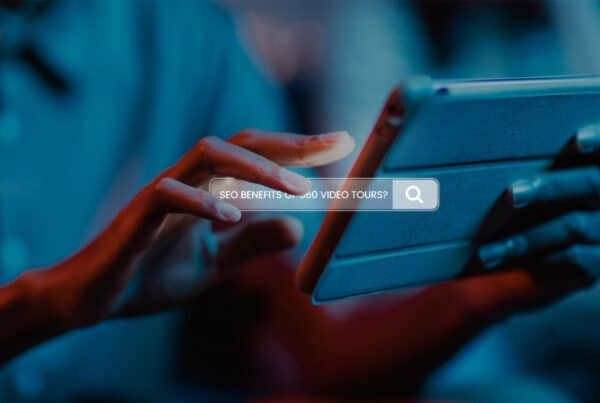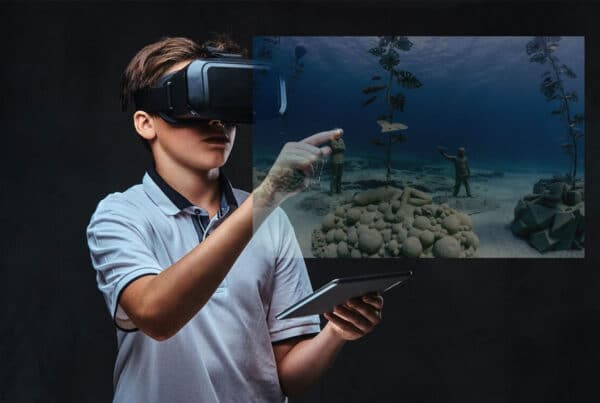Introduction
The tourism industry is continuously evolving, driven by technological advancements and changing consumer preferences. One of the most transformative technologies making waves in this sector is 360 video tours. These immersive experiences allow potential travelers to explore destinations, accommodations, and attractions virtually, providing a realistic preview that enhances their travel planning. This article delves into how 360 video tours can enhance the tourism industry, exploring their benefits, applications, and impact on customer engagement and satisfaction.
Enhancing Customer Experience
Immersive Exploration
360 video tours offer an unparalleled immersive experience that allows users to explore destinations from the comfort of their homes. Unlike traditional photos or videos that provide limited perspectives, these tours enable viewers to navigate through spaces, appreciate layouts, and visualize themselves at a location. This level of interaction fosters a deeper emotional connection with the destination, making it more likely for travelers to commit to a visit. Research indicates that immersive experiences can significantly influence travel decisions, with many users expressing a preference for destinations they have explored virtually.
Interactive Engagement
The interactive nature of 360 video tours keeps potential travelers engaged longer than static content. Users can control their viewing experience—zooming in on specific areas or exploring points of interest at their own pace. This level of engagement not only enhances the overall user experience but also allows travelers to connect with the brand on a deeper level. By providing an engaging and fun way to explore destinations, tourism businesses can increase brand recognition and recall.
Increasing Exposure and Visibility
Attracting Attention
In a crowded marketplace, standing out is crucial for tourism businesses. 360 video tours can help generate buzz and interest around lesser-known destinations or attractions. By providing an engaging and interactive experience, these tours can capture the attention of potential visitors who may not have considered a particular location otherwise. This increased visibility can lead to higher foot traffic and bookings.
Enhanced Marketing Strategies
Tourism businesses can leverage 360 video tours as part of their marketing strategies across various platforms. Sharing snippets of these tours on social media channels like Instagram, Facebook, or TikTok can attract a wider audience and drive traffic to their websites. The visually captivating nature of 360 content encourages sharing among users, amplifying reach and engagement.
Providing Accessibility
Inclusive Experiences
360 video tours play a vital role in making tourism more accessible for individuals with physical limitations or disabilities. By allowing users to explore destinations from various angles without the need for physical exertion, these tours create inclusive experiences that cater to all potential travelers. This accessibility not only broadens the audience for tourism businesses but also aligns with the growing emphasis on inclusivity in travel.
Remote Exploration
For those unable to travel due to health concerns or other reasons, 360 video tours provide an opportunity to explore new places virtually. This remote exploration allows individuals to experience different cultures and environments without leaving home, satisfying their wanderlust while accommodating their circumstances.
Streamlining Decision-Making
Informed Choices
One of the significant advantages of 360 video tours is their ability to help travelers make informed decisions about their trips. By providing realistic previews of accommodations, attractions, and activities, these tours enable potential visitors to assess whether a destination meets their expectations before booking. This transparency reduces uncertainty and enhances customer satisfaction by ensuring that travelers know what to expect upon arrival.
Reducing Time and Costs
For both travelers and tourism businesses, 360 video tours can save time and money. Travelers can explore multiple options from home without needing to visit each location physically. This efficiency allows them to narrow down choices quickly based on personal preferences. For businesses, virtual tours reduce the need for in-person showings or guided visits, allowing staff to focus on other essential tasks while still showcasing their offerings effectively.
Boosting Sales and Revenue
Increased Bookings
The impact of 360 video tours on booking rates is significant. Properties featuring these immersive experiences often see higher conversion rates compared to those relying solely on traditional photos or videos. Studies indicate that listings with virtual tours receive up to 40% more bookings than those without. This increase can be attributed to the enhanced visual experience that minimizes uncertainty and builds trust among potential guests.
Upselling Opportunities
In addition to increasing bookings, 360 video tours can be utilized for upselling additional services or experiences. For instance, if a hotel offers spa services or local excursions, these can be integrated into the tour through interactive hotspots or pop-up information windows. By showcasing these offerings within the virtual tour context, tourism businesses can entice guests to consider additional purchases that enhance their stay.
Applications Across the Tourism Sector
Accommodation Showcases
Hotels and vacation rentals are prime candidates for 360 video tours. These immersive experiences allow potential guests to explore rooms, amenities, and common areas before making a reservation decision. By providing a comprehensive view of what guests can expect during their stay, properties can differentiate themselves in a competitive market.
Attraction Highlights
Tourist attractions such as museums, theme parks, and natural wonders can benefit from 360 video tours by showcasing key features and experiences available at each location. For example, a virtual tour of a museum may highlight specific exhibits while providing contextual information about each piece displayed. This approach not only informs visitors but also generates excitement about visiting in person.
Destination Marketing
Destinations themselves can leverage 360 video tours as part of their marketing efforts. Local tourism boards can create virtual experiences that highlight various aspects of the area—such as cultural events, dining options, outdoor activities, and scenic views—encouraging travelers to choose their location for future vacations.
Future Trends in 360 Video Tours for Tourism
Integration with Virtual Reality (VR)
As technology continues to advance, integrating 360 video tours with virtual reality (VR) is becoming increasingly feasible. VR headsets allow users to immerse themselves fully in virtual environments, enhancing the sense of presence at a destination even further. This integration could revolutionize how travelers plan trips by offering realistic simulations that mimic actual visits.
Enhanced Customization
Future developments in 360 video technology may also lead to more personalized experiences tailored specifically for individual users based on preferences or interests. For instance, a traveler interested in adventure sports could receive customized virtual tours showcasing relevant activities available at various destinations.
Conclusion
In conclusion, 360 video tours are proving to be an invaluable tool for enhancing the tourism industry by providing immersive experiences that engage potential travelers while increasing exposure and accessibility for businesses. These innovative solutions streamline decision-making processes for customers while boosting sales through increased bookings and upselling opportunities. As technology continues evolving within this space—particularly with advancements like VR integration—the potential applications will only expand further into new realms of creativity within marketing strategies across all sectors related directly or indirectly toward tourism-related activities. By embracing this cutting-edge technology today—whether through accommodation showcases or destination marketing—tourism professionals stand poised not just for success but also lasting connections with future generations eager for authentic experiences waiting just beyond their screens!
Elevate your tourism business with immersive 360 video tours! Contact Virtually Anywhere today to discover how our cutting-edge technology can showcase your destinations, accommodations, and attractions, providing potential travelers with an interactive and engaging experience. By offering virtual travel previews, you can enhance customer engagement, increase bookings, and stand out in the competitive tourism industry. Don’t miss the opportunity to transform your marketing strategy—partner with us to create captivating virtual tours that inspire and attract visitors.


